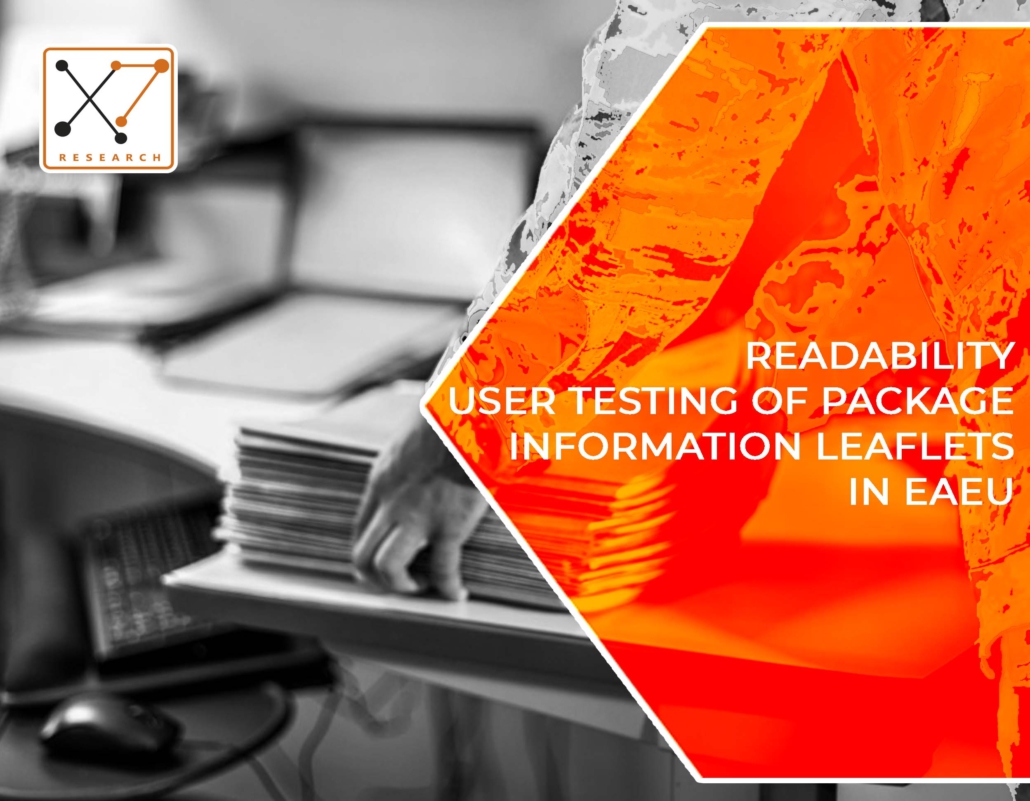Readability User Testing of Package Information Leaflets (PIL) in EAEU
The package information leaflet(PIL) is a document that contains brief information about a medicinal product. The PIL is a mandatory document in the state registration of medicinal products for medical use. patients can easily obtain and understand the necessary information from the package insert.
The key point in the development of the PIL is how easily the user perceives the information in the process of reading. The perception of the text and its readability is influenced by both printing factors (proportions, letter sizes, color, contrast and boldness of the font, the distance between letters) and linguistic features of the material (length of words and sentences, complexity of syntactic structures, repetition of the same words, the abundance of terms).
The key principles in compiling the PIL:
- avoiding complex presentation in medical terminology incomprehensible to the consumer;
- presentation of information in a language that is understandable to a layperson;
- it is desirable to use colloquial language instead of official, the use of short sentences or bulleted lists.
There are also several requirements for the font, including minimum font size, typeface, and styles. If the medication is intended to treat an eye disease, a larger font should be used. Well-thought-out navigation of the document (headings and subheadings), line spacing, print color, etc. are of great importance.
For the development of an easy-to-read PIL, user testing is carried out. We will tell about it in detail.
In the European Union, user testing has been carried out since 1998. In the EAEU countries, standard procedure is given in Decision №88 (Annex 14).
Testing is conducted to develop a legible and easy-to-use sign-in sheet, as well as to take into account all user suggestions. The result can be considered successful if 90% of the test participants understand the information put into the worksheet.
User testing of the package insert is performed when a drug contains new chemical compounds or is available in a brand new dosage form, the drug’s conditions of supply have changed, and when significant new safety information about the drug is included in a previously tested package insert (new clinical guidelines, new patient populations). Testing is always performed for the first four sections of the package insert (identification data, indications for use, knowledge of which is necessary before starting to use the drug, and recommendations for use). The test itself can be carried out by the holder of the registration certificate or a specialized contract organization. Patient associations may be involved in the development of the test questions, and a marketed or full-color insert sheet must be submitted for testing.
Various groups of people who potentially need to use the drug are selected to participate in user testing. The information available to consumers should be understandable to all, including the least able of them.
For each test, a questionnaire is developed (12-13 questions), which reflects all the important and complex aspects of drug use. When preparing for the study, make sure that the questions reflect all the features of safe and effective use of drugs. The questions in the questionnaire should follow a random order, different from the information in the package insert.
Initially, a pilot test is administered to 3-6 participants to verify that the questions are correct. The main test is administered to 10 participants. All necessary changes are made in the PIL based on the first stage of the study. Then the testing is repeated on the next 10 participants until satisfactory results are obtained.
Based on testing results, a report is prepared and included in the dossier (by Section 7 of Appendix #12 to the requirements for instructions for medical use of drugs and general characteristics of drugs for medical use).
The report contains:
- key information for safe use;
- selection of participants and their demographic characteristics;
- analysis of the results for each group tested;
- characteristics of user feedback;
- a checklist (all questions asked, answers received and interviewer observations);
- all versions of the sign-in sheet.
The report itself is included in the registration dossier when it is submitted to the authorized body of the EAEU member state for examination.
X7 Research will conduct user testing of the insert sheet, organize the recruitment of participants, compile the questionnaire, and report the results!



